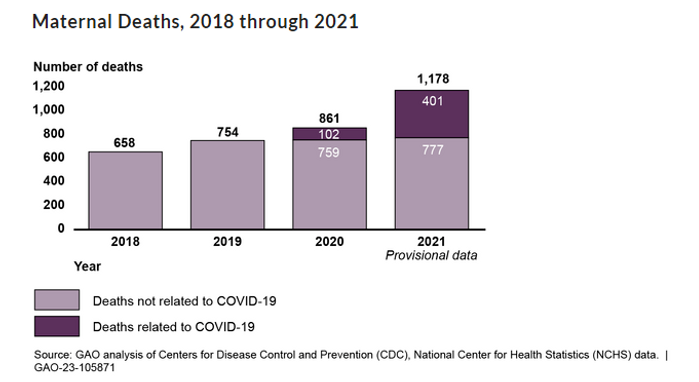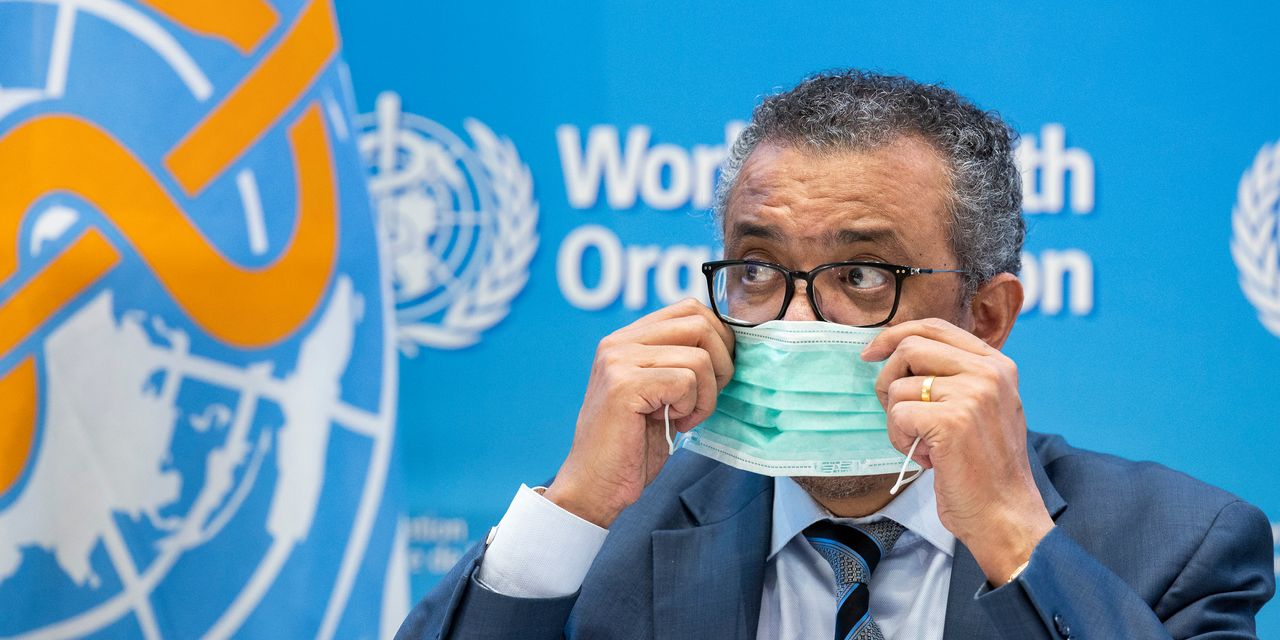Another omicron subvariant was determined to have spread to more countries in the week through Oct. 16 from the previous week, and it may be even more resistant to antibodies than other versions of the virus, according to the World Health Organization.
In its latest weekly epidemiological update, the agency said XBB, a BA.2.10.1 and BA.2.75 recombinant with 14 additional mutations in the BA.2 spike protein, was reported in 26 countries.
“Available preliminary laboratory-based evidence suggests that XBB is the most antibody-evasive SARS-CoV-2 variant identified to date,” said the agency, adding that for now, it does not appear to create more severe illness than other variants. The WHO will continue to track XBB and other subvariants to determine whether they are more infectious or more likely to make people very sick than previous variants.
In the U.S., the Centers for Disease Control and Prevention is more focused on two other omicron subvariants that are spreading fast, especially in New York area. Dubbed BQ.1 and BQ.1.1, the two accounted for 11.5% and 8% of new cases, respectively, that were recorded in the week ending Oct. 15, up from 4.1% and 1.9% two weeks earlier.
Combined, they accounted for 11.4% of overall U.S. cases in the same week. Before last Friday’s data release, they were included in BA.5 variant data, as the numbers were too small to break out. BQ.1 was first identified by researchers in early September and has been found in the U.K. and Germany, among other places. The CDC is updating the numbers every Friday. Anthony Fauci, President Joe Biden’s chief medical adviser, has described the two as “troublesome” ahead of an expected winter wave of cases.
The WHO update found that the trend of declining global COVID cases and fatalities continued, with the global tally of cases down 6% from the previous week, while the number of fatalities fell 17%.
U.S. known cases of COVID, meanwhile, are continuing to ease and now stand at their lowest level since mid-April, although the true tally is likely higher given how many people overall are testing at home, where data are not being collected.
The daily average for new cases stood at 37,999 on Wednesday, according to a New York Times tracker, down 12% from two weeks ago. The daily average for hospitalizations was down 2% to 26.629, while the daily average for deaths was down 6% to 366.
There was grim news Wednesday in a new government report that found that COVID drove a dramatic increase in the number of women who died of pregnancy or childbirth complications in the U.S. last year, the Associated Press reported. The crisis hit Black and Hispanic women especially hard, the report found.
Pregnancy-related deaths have spiked nearly 80% since 2018, and COVID was a factor in a quarter of the 1,178 deaths counted last year.

Uncredited
The percentage of preterm and low birthweight babies also went up last year, after holding steady for years. And more pregnant or postpartum women are reporting symptoms of depression.
“We were already in the middle of a crisis with maternal mortality in our country,” Karen Tabb Dina, a maternal-health researcher at the University of Illinois at Urbana-Champaign, told the AP. “This really shows that COVID-19 has exacerbated that crisis to rates that we, as a country, are not able to handle.”
Mental-health issues likely contributed to the increase in pregnancy-related deaths, Tabb Dina said. Many women who experience depression and anxiety during or after their pregnancy struggle to get the care they need.
Pregnancy-related deaths for every 100,000 births climbed from 44 in 2019 to 68.9 last year among Black women. White women had death rates of 26.1 last year, a jump from 17.9 in 2019.
Death rates among Hispanic women had been on the decline but swelled during the pandemic, from 12.6 per 100,000 in 2019 to 27.5 last year.
The maternal death rate in the U.S. is higher than in many other developed nations and had been on the rise in the years leading up to the pandemic. COVID exacerbated the situation.
Coronavirus Update: MarketWatch’s daily roundup has been curating and reporting all the latest developments every weekday since the coronavirus pandemic began
Other COVID-19 news you should know about:
• Abbott Laboratories said Wednesday it expects sales of COVID-19 tests to drop off amid speculation about when SARS-CoV-2 will become endemic, meaning the virus is no longer as disruptive to the health system and to daily life, MarketWatch’s Jaimy Lee reported. The company said Wednesday it expects to bring in $500 million in COVID test sales in the final three months of the year, for a total of $7.8 billion in sales in 2022. “We haven’t really planned for a big winter surge,” Abbott CEO Robert Ford said on an earnings call. “It’s more of an endemic-like forecast for Q4, and I think that’s the kind of endemic forecast that we’ll see going into 2023.”
• Moderna
MRNA,
has won authorization in the European Union for its COVID-19 vaccine for use in children under 6, Dow Jones Newswires reported. Preliminary efficacy analysis on PCR-confirmed COVID-19 cases during the omicron wave showed a two-dose series of Spikevax has similar levels of efficacy in adults and children under 5 years old, Moderna said. Pfizer Inc.
PFE,
and BioNTech SE
BNTX,
said they received EU marketing authorization for a COVID-19 vaccine as a three-dose series for children under 5 years old.
• Novavax
NVAX,
said its protein-based COVID-19 vaccine booster was granted emergency-use authorization (EUA) for adults in the U.S., MarketWatch’s Tomi Kilgore reported. The booster shot is approved for people at least 18 years old who have completed primary vaccinations. The company said in trials, any local and systemic reactions from the booster had a median duration of about two days. The Novavax vaccine is a conventional protein-based shot and does not use the mRNA technology used by the Pfizer/BioNTech and Moderna vaccines.
• Staffers at the WHO’s Syria office have alleged that their boss mismanaged millions of dollars, plied government officials with gifts — including computers, gold coins and cars — and acted frivolously as COVID swept the country, the AP reported. More than 100 confidential documents, messages and other materials obtained by the Associated Press show WHO officials told investigators that the agency’s Syria representative, Akjemal Magtymova, engaged in abusive behavior, pressured WHO staff to sign contracts with high-ranking Syrian government politicians and consistently misspent WHO and donor funds.
Here’s what the numbers say:
The global tally of confirmed cases of COVID-19 topped 626.4 million on Thursday, while the death toll rose above 6.57 million, according to data aggregated by Johns Hopkins University.
The U.S. leads the world with 97 million cases and 1,066,600 fatalities.
The Centers for Disease Control and Prevention’s tracker shows that 226.2 million people living in the U.S., equal to 68.1% of the total population, are fully vaccinated, meaning they have had their primary shots. Just 110.8 million have had a booster, equal to 49% of the vaccinated population, and 25.6 million of those who are eligible for a second booster have had one, equal to 39% of those who received a first booster.
The CDC reports that some 14.8 million people have had a dose of the updated bivalent booster that targets omicron and its subvariants along with the original virus.
White House press secretary Karine Jean-Pierre told reporters on Thursday that there was progress this week in persuading Americans to get the updated vaccine.
Some 4.5 million people got their updated shot in the past week, marking the biggest weekly increase since the start of the fall vaccination launch, up roughly 40% from the previous week. The boosts the total to about 20 million people, she said, numbers not yet reflected on the CDC website.
“This is really important progress, but it’s not enough. We need everyone to step up and get their updated vaccine as soon as possible,” she said.
